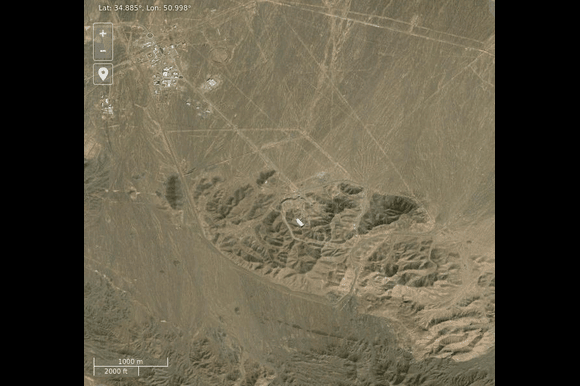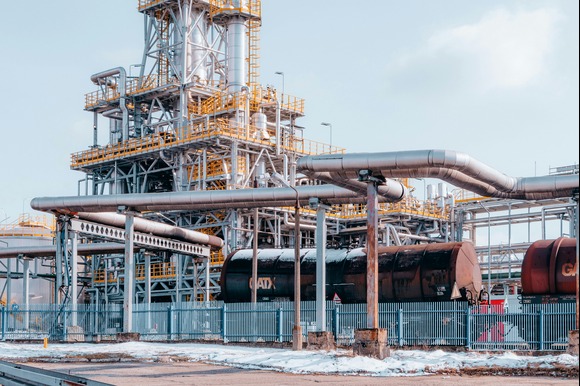
By Imagery from LANCE FIRMS-Wikipedia
Initial intelligence from the Pentagon suggests that recent US airstrikes on Iran’s nuclear facilities failed to destroy the country’s nuclear programme entirely and have likely delayed its progress by only a few months. According to sources familiar with the Defense Intelligence Agency’s (DIA) early analysis, Iran’s stockpile of enriched uranium survived the attack, casting doubt on official claims of a complete military success.
The US struck three key nuclear sites—Fordo, Natanz, and Isfahan—on Saturday using “bunker buster” bombs designed to penetrate up to 18 meters (60 feet) of concrete or 61 meters (200 feet) of earth. However, insiders cited by CBS say the impact was primarily limited to above-ground structures. The vast network of Iran’s underground centrifuges reportedly remains “largely intact.”
Two of the facilities had their entrances sealed and suffered structural damage, but much of the critical infrastructure, deep below the surface, appears to have escaped the worst of the blasts. Intelligence sources further confirmed that a portion of Iran’s enriched uranium stockpile was relocated prior to the strikes, diminishing the overall effect of the operation.
Despite the Pentagon’s measured conclusions, President Donald Trump called the assessment “flat-out wrong” and attributed the leak to a “low-level loser in the intelligence community.” He insisted that the strikes “completely destroyed” Iran’s nuclear sites, labeling the operation “one of the most successful military strikes in history.” The White House pushed back strongly against the report, criticizing media coverage as an effort to “demean” the mission.
There are currently 18 intelligence agencies in the US, and conflicting assessments are not unusual, as seen with long-standing disagreements over issues such as the origin of Covid-19. Officials cited by CBS noted that this report is a preliminary assessment and that the intelligence picture could evolve as further evidence emerges.
The 30,000-pound (14,000kg) Massive Ordnance Penetrator used in the strike is believed to be one of the only weapons capable of reaching Iran’s fortified underground enrichment centers. Yet, the early analysis indicates that Iran’s nuclear capabilities may not have been significantly degraded.
Iran has long maintained that its nuclear programme is for peaceful purposes. In response to the attacks, Iran’s state media claimed that the targeted sites had been evacuated ahead of time and that enriched materials were relocated in advance. Deputy political director of Iran’s state broadcaster, Hassan Abedini, stated that Iran “didn’t suffer a major blow because the materials had already been taken out.”
US officials have, however, characterized the strike as a major success. Defence Secretary Pete Hegseth asserted that “everything we have seen—and I’ve seen it all—confirms that our bombing campaign obliterated Iran’s ability to create nuclear weapons.” He dismissed the critics of the mission as individuals aiming to “undermine the President and the successful mission.”
Satellite imagery released following the attack showed multiple impact craters and debris around the Fordo nuclear site. However, analysts noted that it is still unclear how much of the underground infrastructure sustained damage.
US Congressman Brad Sherman, a Democratic member of the House Foreign Affairs Committee, raised concerns about the administration’s lack of clarity. Speaking to the BBC, he criticized the use of vague terms such as “obliterate,” arguing that it remains unclear whether the attacks disrupted Iran’s centrifuges, depleted its enriched uranium stockpile, or affected its ability to weaponize its uranium. “All indications, including Vice-President Vance’s statement, indicate that we don’t think we got the stockpile,” Sherman said, referencing pre-strike satellite images of trucks entering one of the sites.
Meanwhile, Israeli Prime Minister Benjamin Netanyahu declared the military campaign a success. In a statement, he said, “We have removed two immediate existential threats to us—the threat of nuclear annihilation and the threat of annihilation by 20,000 ballistic missiles.” He credited Israel’s military operations since hostilities with Iran began on June 13 for severely damaging Iran’s missile capabilities and nuclear ambitions.
Saudi-based news outlet Al Hadath, citing unnamed Israeli sources, reported that much of Iran’s uranium stockpile may have been buried under the rubble, although that claim has not been independently verified.
David Albright, president of the Institute for Science and International Security and a recognized expert in nuclear weapons development, weighed in on the situation via X (formerly Twitter). He warned that although the strikes caused disruption, Iran would likely need “significant time, investment and energy” to rebuild. He also emphasized that Iran is now under heightened surveillance from both the US and Israel, and that future reconstruction efforts could provoke additional strikes.
Following the US strikes, Iran retaliated on Monday with a missile attack on the Al Udeid Air Base in Qatar, which houses thousands of US troops. Qatari and US defense officials confirmed that the attack was largely intercepted and resulted in no reported casualties or injuries.
Since that exchange, a ceasefire between Iran and Israel has been brokered, with mediation efforts led by President Trump and Qatari officials. Despite the truce, lingering questions over the actual damage inflicted on Iran’s nuclear infrastructure continue to fuel international debate over the effectiveness of the US-led operation.




